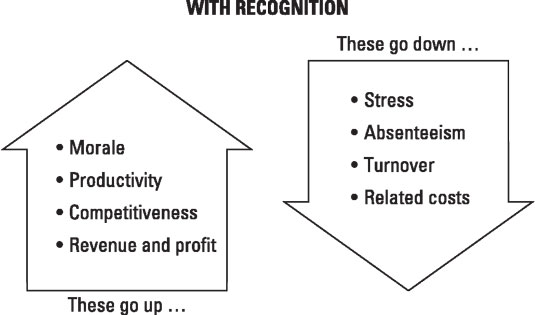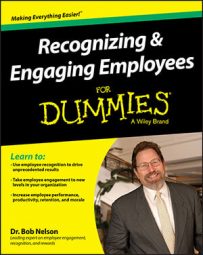The following discussion outlines some recent changes in what employees expect in the workplace and explains how managers can more effectively help to motivate today’s employees.
Every employee wants to be magnificent. Every employee starts a new job excited about doing his or her best. Yet for many employees, the initial excitement of the job quickly wears off, and their motivation dissipates. This outcome is the direct result of how managers treat their employees on a daily basis.
No more command-and-control
In recent decades, the use of coercion, fear, and the threat of punishment has become increasingly ineffective for motivating employees. Employees have more of a choice about where they work and more control over their discretionary energy at work — that is, they choose whether to be engaged or not.
Managers increasingly expect employees to use their best judgment at work; to make decisions on their own or to be proactive in solving problems; and to not just do what they are told to do. Moreover, today’s employees increasingly want to be given more authority and greater autonomy in using that authority. They want to be trusted to do the work they are hired to do and to do that work to the best of their abilities.
The role of managers has thus shifted from an authoritative command-and-control, my-way-or-the-highway style — which has been the predominant style of management since the Industrial Revolution. Now effective managers are those who act more like coaches, colleagues, counselors, and even cheerleaders for their employees.
Managers need to create a new partnership with employees to help employees reach their own goals, as well as the goals of the organization. The effective use of recognition and rewards is the primary means for creating a supportive work environment in which employees can be — and are — highly motivated and engaged, assuring the success of your organization.
Creating an environment conducive to motivation
Another major change in the workplace is that motivation is no longer the sole province of the manager. While managers still play a critical motivational role, so do team leaders and peers, upper management, and human resources departments . . . even customers. Informal influence and leadership plays a bigger role than ever today.
Regardless of who provides the immediate consequences, it’s up to managers to establish a supportive environment in which people can perform at their best and in which each and every individual in the organization can be motivated and engaged. In fact, creating such an environment is perhaps the most important role of managing today.
The key element in shaping a more motivating and engaging work environment is the management of consequences, particularly positive consequences.
The benefits of recognition
Rewards and recognition are tools that any manager or leader can use in any organization to help realize enormous business benefits. In some cases, these benefits directly correlate to recognition; that is, as recognition goes up, so too do the following benefits:
Improved morale: One of the more immediate effects of increased recognition is improved morale. When employees are recognized for doing good work, they feel special and, consequently, happier and more satisfied with their employers.
Enhanced productivity: Employees who feel good about their jobs tend to perform at a higher level; the performance itself becomes a further motivator for wanting to continue to do a good job.
Increased competitiveness: When companies recognize and reward performance that is aligned with the organization’s key objectives, the organization becomes more successful, more competitive, and more efficient in reaching its goals.
Higher revenue and profit: Any organization that wants to make money and be profitable will find that recognizing progress in those areas encourages employees to work harder to make money and realize greater profits for the company.
Another benefit of using recognition is that it has an inverse relationship to the negative elements of stress and employee turnover; that is, as recognition increases, stress and turnover decrease. Chances are, as you commit to recognizing your employees, you’ll see the following:
Decreased stress: There’s a fine line between stress and excitement. Recognition helps to make work more fun and exciting, increasing the likelihood that employees will rise to the challenge when needed, rather than feel out-of-control and swamped by their work.
Decreased absenteeism: When employees are thanked and valued for the work they do, they begin to look forward to the time they spend on the job. Absenteeism declines.
Decreased turnover: A study by the Gallup Organization in which 2 million workers at 700 companies were interviewed revealed that the number one factor affecting the length of an employee’s tenure at a company was the quality of that employee’s relationship with his or her immediate supervisor. More recognition equals better relationships, which equals decreased turnover and increased tenure.
Lower costs related to turnover: When employees are happy to come to work and are excited about, and focused on doing their best work, the need for — and costs of — interviewing, hiring, and training new employees all decline.
The figure shows this effect of recognition, increasing positive outcomes and decreasing negative ones.


